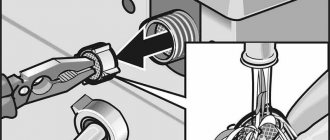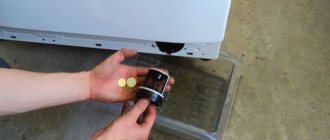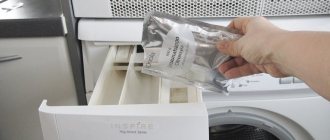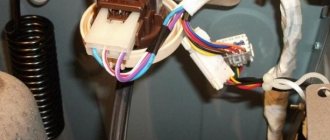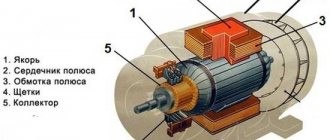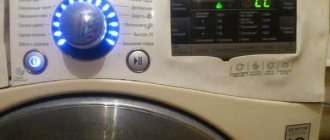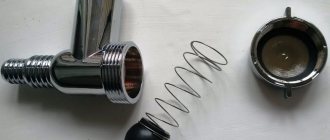How to disconnect a washing machine: from the water supply, sewerage, preparation for transportation
Automatic washing machines, as you know, are installed in a pre-selected prepared place where there are all the necessary communications. However, sometimes cases arise when you need to turn off the device and move it to another location. For example, when renovating a bathroom or purchasing new washing equipment. You will learn how to disconnect a washing machine from the water supply in this article.
Why disconnect the SMA from the water supply: preparatory work
An automatic washing machine (AWA) is a piece of equipment that is installed for a long time and is rarely moved to another place. But there are still situations when you need to disconnect the washing machine from the communications. For example:
- You have started renovations in the premises.
- You buy new equipment.
- Are you planning to move?
- You will be carrying out repairs or cleaning of the unit.
If you decide to do the work yourself, prepare the necessary tools. They may vary depending on the type of fasteners and the material of the components.
Important! Plastic nuts are unscrewed by hand because they are a fragile material and tools can damage the mount.
For metal connections, prepare:
- pliers;
- wrench;
- slotted and Phillips screwdrivers.
If the fastener is stuck to the base, spray it with WD-40.
So, the tools are prepared, let's move on to the next stage.
How to disconnect a washing machine from the water supply?
Before starting any work with equipment, follow safety rules. Start by unplugging the washing machine. Once you have removed the plug from the outlet, turn off the water supply shut-off valves. They are located behind the SMA body, on the pipes near the wall.
If the hoses are damaged, shut-off valves will prevent water from escaping.
Now make some room to work. Move the cabinet away from the wall. Make sure that the connections are not damaged by strong tension.
Once you have enough space, go to the back wall. Place rags or containers under the body.
Then proceed like this:
- Tighten the nuts by hand or using a tool. Be careful: sudden movements may cause the nut and thread to break.
- Disconnect the opposite part of the hose from the wall. You may need pliers for this. Drain the water into a bucket.
- To disconnect the drain hose, remove one end from its seat on the sewer or siphon (depending on where the connection is made).
- The other end is connected to the pump. You don't have to remove it, just secure the sleeve to the back wall with clamps.
- But if you want to completely remove the element, then tilt the washing machine body back.
- Get to the bottom.
- Loosen the clamp and remove the part from its place. At the same time, you can clean the hose of debris.
Also remove clogs from drain holes using a small brush. Remove the filter mesh and rinse it under tap water.
Baking soda will help remove rust. Read more in the article “How to wash and clean a washing machine with soda.”
Empty the water from the buckets and remove the rags. Make sure all communications are removed. Secure the hoses and power cable to the rear wall.
If you are going to transport the machine, be sure to completely drain the liquid. Otherwise, during transportation it may get on the board or motor winding, which will lead to serious damage.
The drain filter will help remove all the liquid. It is hidden behind a small hatch at the bottom of the front panel. Open the hatch. It can be attached with latches or bolts. Some models have a drain hose next to the filter.
- Unscrew the filter counterclockwise.
- Place the container and wait until the water comes out.
Secure the drum to prevent damage during transportation. Well, if you still have the shipping bolts, then screw them into the back wall. In other cases, you can use foam rubber or foam.
Important! The washing machine must be transported strictly vertically!
By following our recommendations, you can easily and accurately disconnect communications. The process can be photographed with a camera to connect everything in reverse order. Watch the video for details:
How to turn off the washing machine during washing
The program in an automatic washing machine is designed for a particular operating time. In addition, if the machine is running, the door locks automatically. But sometimes it is necessary to stop the device, as they say, “halfway”. Let's look at how you can stop the washing machine during washing.
Quick wash completion
Most often, you need to quickly complete the wash if you are convinced that there are unwanted objects in the drum. Or, on the contrary, you found several forgotten things that need to be washed at all costs. There are several ways to stop the unit.
Pressing the “Start-Pause” button
Pressing the button once will pause the washing program. Now wait for the door lock to unlock. Open the door and perform the necessary actions (for example, add forgotten laundry).
Stopping a wash program
To do this, just press and hold the start button for a few seconds. The specified program will stop running. Then one of two options is possible:
- The machine unlocks the door without draining the water.
- The water is completely drained and the door is unlocked.
- If the water has not drained, you can activate the appropriate program and achieve complete removal of water from the tank.
- If the washing machine program has stopped due to a power outage, then when the power supply is restored, the washing program will restart from the point it stopped.
The car is frozen
It’s quite an unpleasant moment when the device stops responding to control commands. In this case, problems with how to turn off the washing machine usually do not arise. It helps to disconnect the washing machine from the network for 15 minutes, which makes it possible to reset a program that has frozen. After this, the equipment will begin to function normally.
The washing machine is turned off - how to drain the water?
To avoid a flood in the bathroom or kitchen, you can drain the water through a filter. It is located in the lower front part of the unit, behind the hinged door. The best option is to use the drain or spin mode to remove water. Just five to ten minutes and the tank will be completely empty.
Knowing how to disconnect the washing machine from the water supply or pause a given washing program, you can avoid many problems associated with the operation of this unit. We hope you got by with simple efforts, adhering to the advice from this article, which means you won’t face any unplanned costs for purchasing new equipment.
Sometimes situations arise in which you urgently need to stop washing and interrupt the operation of the washing machine.
Full stop
If you need to completely turn off the washing machine, then you need to drain the water through a hose in advance (for example, in machines such as Indesit, Hotpoint, Ariston, etc.). If the washing machine is not equipped with a hose for draining water, then you need to use a filter. As a rule, it is located at the bottom of the machine, in the front part. This method should also be used if draining the water is impossible in any way (for example, if the machine simply freezes and stops responding to commands). After this procedure, you can cancel the wash: turn the knob to “Stop” to artificially scroll through all stages of the wash. In this way you can stop the washing process. Now many people have a question: how to open it later to get things out? Very simple. After draining the water and canceling the wash, the washing machine door will unlock after 1 minute and you can turn off the machine from the network.
There is another way to completely stop the washing machine. With its help, you can stop the operation of washing machines from companies such as Samsung, Electrolux, Bosch, Beko. To stop the machine, just press and hold the “Start/Stop” button for 5-7 seconds. As a result, two outcomes are possible: the washing machine will either drain the remaining water or not, depending on the brand of the machine and the manufacturer. After solving the water problem, you can open the washing machine and remove the items. And in Atlant models there is an emergency hatch opening. This washing machine is equipped with a special cable (near the emergency hatch). If you pull it, the hatch will automatically unlock. And in AEG models there is a “Pause” button, which turns off the power to the machine. If the water temperature is below 50 degrees, the door will unlock.
Thus, stopping the washing machine during washing is easy. It is enough just to choose the most suitable method for this.
Unblocking
A common problem in the operation of Ariston, Indesit or LG washing machines is the door being blocked, which does not allow the laundry to be removed after the end of the wash cycle. There may be several reasons for this problem:
- Remaining water in the drum.
- Failure of the locking device.
- Natural wear and tear of equipment.
How to disable the lock on a washing machine? You can try to restart the spin or rinse mode. It is likely that a small glitch occurred in the program, which can be eliminated by restarting the unit. If this method does not lead to the desired result, you can try unplugging the machine and, after waiting 10-15 minutes, open the door. If the blockage was caused by a minor glitch in the program, the unit will be restored without problems.
If the door lock breaks, you need to open the plastic bottom panel and find the cable for forced opening of the hatch in the lower part near the filter. It comes in bright orange or deep red. You just need to pull the cable a little and the door will unlock.
Full stop
If you need to completely turn off the washing machine, then you need to drain the water through a hose in advance (for example, in machines such as Indesit, Hotpoint, Ariston, etc.). If the washing machine is not equipped with a hose for draining water, then you need to use a filter. As a rule, it is located at the bottom of the machine, in the front part. This method should also be used if draining the water is impossible in any way (for example, if the machine simply freezes and stops responding to commands). After this procedure, you can cancel the wash: turn the knob to “Stop” to artificially scroll through all stages of the wash. In this way you can stop the washing process. Now many people have a question: how to open it later to get things out? Very simple. After draining the water and canceling the wash, the washing machine door will unlock after 1 minute and you can turn off the machine from the network.
There is another way to completely stop the washing machine. With its help, you can stop the operation of washing machines from companies such as Samsung, Electrolux, Bosch, Beko. To stop the machine, just press and hold the “Start/Stop” button for 5-7 seconds. As a result, two outcomes are possible: the washing machine will either drain the remaining water or not, depending on the brand of the machine and the manufacturer. After solving the water problem, you can open the washing machine and remove the items. And in Atlant models there is an emergency hatch opening. This washing machine is equipped with a special cable (near the emergency hatch). If you pull it, the hatch will automatically unlock. And in AEG models there is a “Pause” button, which turns off the power to the machine. If the water temperature is below 50 degrees, the door will unlock.
Thus, stopping the washing machine during washing is easy. It is enough just to choose the most suitable method for this.
Disconnection from water supply
Depending on how the machine is connected to the water supply, you may need certain tools, most often an adjustable wrench, pliers, and screwdrivers of various types. Sometimes you can do without using them. The algorithm of actions when disconnecting the machine from the water supply is as follows:
- Make sure that the washing machine is not currently functioning and is disconnected from the power supply.
- It is necessary to turn off the water supply tap. If there is a connection to both a hot and a cold system, then both taps are closed. Usually they are located behind the washing machine or near the sink if the washing machine is located in the kitchen.
- You need to move the machine away from the wall or other surface with which the washing machine is in contact with the back panel. It is important to ensure that the inlet hose connected to the water supply is not subject to strong tension, otherwise it may be deformed or damaged.
- If water suddenly starts pouring out of the hose, it is recommended to cover the floor with rags in advance and prepare a bucket.
- You need to carefully unscrew the hose from the water supply system. Hoses of this type are equipped with standard type threads and are unscrewed counterclockwise. If you cannot unscrew it by hand, you can use an adjustable wrench or pliers, but be careful - the vast majority of connecting elements are made of fragile plastic. If they are “stuck” to each other and do not unwind, do not press too hard, as this will lead to damage. You can use WD-40 liquid - spray the fasteners, wait 10-15 minutes and unscrew them. After unscrewing, check the condition of the rubber gasket, which protects against excessive water leaks - if it is torn due to age or damaged when dismantling the hose, the next time you connect the washing machine, you need to replace the gasket with a new one.
- After dismantling the hose, drain the remaining water into a bucket. You can also unscrew it from the machine itself for ease of transportation and checking the inlet strainer for debris and deposits formed from impurities and rust in the water.
Preparing for replacement
Replacing a drain hose is a slightly more labor-intensive process compared to replacing a fill hose. To replace the drain, you need to disassemble the washing machine and disconnect it from the pump. Depending on the manufacturer of the machine, the hose inside can be routed and secured in different ways. To make it more convenient to work, you can first dismantle the top cover of the machine. This is done as follows:
- unscrew the screws holding the lid - they are located on the back wall of the machine;
- Having unscrewed the screws, the cover must be moved back so that it comes out of the grooves;
- remove and set the cover aside.
Further actions depend on the specific brand of equipment. There are several common options for accessing the drain hose, which are similar for certain manufacturers due to the design features of the machine models.
For washing machines of the Electrolux and Zanussi brands, access to the internal parts is possible from the rear side, from which you first need to twist the back cover. This process consists of the following steps.
- The top cover of the machine is removed, held in place by a pair of screws. They are located on the back wall of the device.
- Unscrew 4 screws located at the top, 2 side and 2 or 3 (depending on the model) bottom - they hold the back wall. The top and side screws are hidden by plugs.
- The water inlet valve mount is removed from the rear wall and the rear wall is carefully detached from the machine.
READ MORE: Malfunctions of the Electrolux washing machine and their elimination
When access to the internal parts of the machine is ensured, proceed to dismantling the old and installing a new drain hose. Before disconnecting the old one, it is a good idea to first drain the water that remains in the washing machine.
This can be done this way: the drain hose of the washing machine is lowered down and water is poured into the prepared container. After removing the remaining water, you need to loosen the clamp holding the hose.
Remove the old one and install the new one in the same place, tightening it with a clamp.
Do not forget to check the tightness of the connection at the point of connection to the pump and to the sewer.
To get to the drain hose mount and replace it in machines of these brands, you need to remove the front wall, and you will also need to remove a number of other components. The work algorithm will look like this.
- The sealing cuff is removed from the hatch, which is held in place by the clamp.
- The detergent dispenser tray is detached from the machine.
- The plastic panel located at the bottom of the machine is removed.
- The remaining water is drained.
- The screws holding the front wall are unscrewed. Two of them are at the bottom and one at the top.
- The wall is removed, which must first be pulled towards you and then moved down.
- The wires coming from the hatch lock are disconnected.
It is also possible to disconnect the hose by loosening the holding clamp. Then it is removed from the wall and brought out. The new one should be inserted as tightly as possible, after which it is clamped with a clamp. Check the reliability of the fastening and whether the hose is installed correctly and whether there are any kinks on it. Next, route it inside the car and take it outside. The work is done, now all that remains is to assemble everything and connect the washing machine to the sewer system.
You can get to the inside of the drain hose in machines of these brands from the bottom of the case. To change it, the course of work will be like this.
- First you need to remove the base panel that covers the pump filter.
- The filter is unscrewed and the remaining water is drained.
- Now the washing machine needs to be tilted. To do this, you need to move the machine 30-40 cm towards the wall and tilt it so that it rests on the wall.
- Tilt the machine and unscrew the screws located below; this can be done with an angle screwdriver.
- Having reached the inside of the hose, you can remove it by loosening the clamp.
- Before completely disconnecting the old one, it would be a good idea to take a photo of how it is secured in order to install the new one correctly later. After unfastening the hose completely, pull and remove it from the machine.
- Now you need to install a new one and secure it with a clamp, after which everything needs to be assembled in the reverse order.
- Connect the outer end of the hose to the sewer system. The connection must be checked for leaks.
Changing the drain hose in this type of washing machine is much easier. In most cases, you can get to the inner end by unfastening the side wall. To do this you need to do a number of actions.
- Unscrew the screws located at the end of the rear wall and one at the end of the lower part on the front side of the machine.
- Slide the side panel towards the back, then lower it down and remove it.
- Having provided access to the hose and unscrewing the holding clamp, it can be disconnected.
- Now you need to detach the inner part of the hose from the machine body.
- Taking it out of the washing machine, put it on and attach the new one.
Now everything is ready, you can assemble the machine in reverse order. When it is assembled, you need to connect the outer end of the hose to the sewer and check the tightness of the connection.
A flexible tube for draining waste fluid is fixed to the asynchronous motor. Made from durable polymer, resistant to high and low temperatures. Changing the drain hose in a washing machine yourself is not easy. However, if you follow the step-by-step instructions, replacing the flexible tube will be a doable task.
- Reasons for failure
- DIY repair
- Ariston, Ardo, Whirpool, Candy, LG, Samsung, Beko, Indesit
- Electrolux, Zanussi
- Bosch, Siemens, AEG
- Top Loading Models
- Drain pump failure
Drainage tubes are made of polymer, which has the ability to resist destruction under the influence of external load. And also a long service life. Sometimes it may fail. The need to replace the hose arises:
- when purchasing a device with a short drain hose. In this case, a short part can be extended using polymer pieces. However, due to the increase in detachable connections, the risk of fluid leakage increases;
- in case of depressurization of the drain hose of the washing machine. Loss of surface seal can be restored using aluminum construction tape or PVC adhesive tape. However, this method will help get rid of trouble for a short time;
- when solid hardness salts accumulate in the corrugated pipe and form a stench. In this case, the tube can be cleaned using a tool with a Kevlar brush. However, this method does not always give good results.
Replacing the drain hose in washing machines requires full access to ball valves, shock absorbers and sensors. In almost all devices, the tube is attached to a low-power asynchronous motor with a rotor, so to change the element you need to detach it from the base and the motor.
READ MORE: How to choose a gasoline and electric grass trimmer - expert advice. The best electric trimmers
Important!
Before starting work, you need to drain the remaining liquid. And for convenience, detach the top trim. It is not recommended to tilt the device. Disconnect the corrugated part from the water intake structure and pull out the outlet.
In these washing machines, it is easy to change the tube for removing contaminated waste liquid. For Samsung, Indesit, and Beko devices, it doesn’t take long to gain access to the corrugation. There is no need to dismantle the surfaces, and you can get to this part of the plumbing fixture under the drum. Models from Ariston, LG, Samsung, Beko, Indesit brands should be carefully placed on one side. Further:
- Use pliers to loosen the connecting bracket;
- remove the end of the pipe from the pump;
- gradually pulling out the tube, leave its second end attached to the base;
- if it is not possible to get to the very end of the damaged part, unscrew the motor and remove the hollow tube from it;
- after disconnecting the damaged corrugation, install a new one, fixing it in the same way as the damaged one;
- using a connecting bracket, connect one end of the part to the centrifugal engine;
- install the asynchronous motor, attach the tube.
Do you need a tool?
Depending on how the machine is connected to the water supply and what type of hose is on the washing machine, a tool may not be required for the job.
If the inlet hose has plastic fittings and nuts at both ends, then they must be connected and dismantled by hand, since plastic material is fragile. This is the most common hose that comes with the machine. However, its length is not always enough and it is replaced with another one.
If there is a metal nut at the end of the hose that can rust to the tee or pipe over time, you may need pliers or a small wrench depending on the size of the nut. If the connection is secured with a clamp, then a Phillips or straight screwdriver will be useful.
WD-40 liquid will help remove rust and make it easier to unscrew the filler hose.
How to drain water from a washing machine?
The need for this operation arises regardless of the operating mode of the equipment. The machine may complete the cycle or interrupt it due to a malfunction somewhere. Forced draining is possible in several ways. However, not all of them can be considered universal: some devices do not allow any “liberties”.
The result of incorrect actions will be a “flood”, one of the most undesirable consequences for the owners and their neighbors. Safety precautions are another point that must be kept in mind in any situation. Any household appliance that is forced to work with water must be disconnected from the network before starting any manipulations, including eliminating problems with draining the liquid.
What do they do if the washing machine does not want to drain water? In some cases, no action is required: this applies to front-loading models. If the unit has successfully completed the cycle, you need to wait 5-10 minutes, during which the doors will lock. If after this period of time nothing happened, access remained closed, then we can assume that a problem exists.
Attack of the unit "head-on"
Any manipulation with devices requires caution, so first take measures that will eliminate potential troubles.

